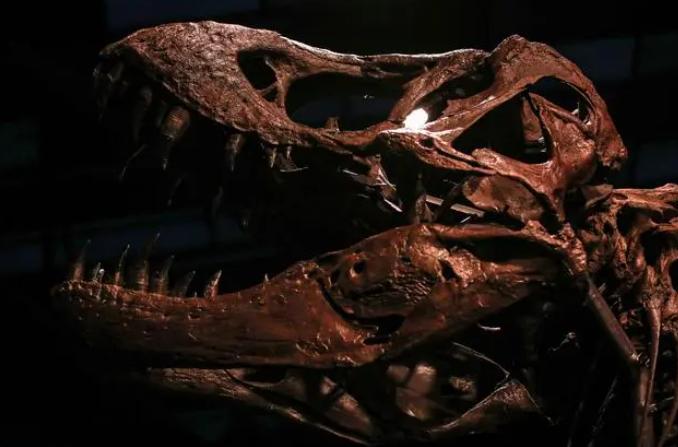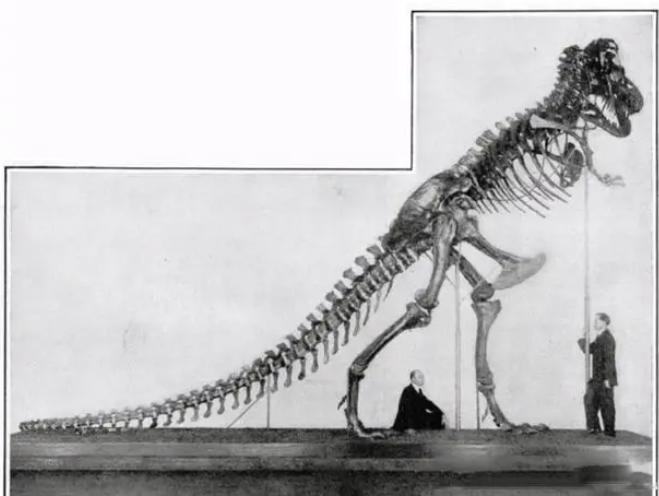Dinosaur Encyclopedia
Why is it Difficult to Reconstruct Dinosaurs?
Regarding the reconstruction of dinosaurs, some people think it’s simple – just piece the bones together, fill in the muscles and skin based on the bones, and that’s it. Some even believe it’s just scientists messing around.
However, both of these claims are incorrect because dinosaur reconstruction is a highly complex discipline within paleontology. Since it’s a scientific endeavor, it must be based on evidence and reasoning. However, it’s undeniable that it’s very difficult to fully reconstruct dinosaurs as they originally were; what we achieve is only an approximation.

I. Misconceptions about Dinosaurs
Dinosaurs became extinct approximately 65 million years ago, with only a small number of small, feathered dinosaurs evolving into birds and surviving to this day. Moreover, because birds have also evolved over a long period of time, their contribution to reconstructing dinosaurs is extremely limited.
Furthermore, the dinosaurs we currently discover are in fossil form. The formation of fossils is quite strict – they need to be immediately buried in sediment either before or after death to prevent scavenging, and then over a long period, the sediment turns into sedimentary rock, eventually petrifying the bones of the animal to form fossils.
After fossilization, for them to be discovered by humans, they must undergo tectonic uplift. During this process, intact animal fossils often break or become separated due to tectonic movements. Consequently, the fossils found are usually partial, especially for larger animals like dinosaurs, making complete fossils even harder to find.
Because of this, dinosaur reconstruction work is prone to errors. Below are examples of two well-known dinosaurs and the errors encountered during their reconstruction.

Tyrannosaurus rex
Tyrannosaurus rex, or T. rex, is one of the most well-known dinosaurs, belonging to the genus Tyrannosaurus of the family Tyrannosauridae. Its fossils were first discovered in 1892, initially consisting of only two vertebrae. Obviously, reconstructing the appearance of T. rex based on two vertebrae alone was unrealistic. Subsequently, as more T. rex fossils were unearthed, reconstruction efforts progressed.
By the mid-20th century, with more than 10 T-rex fossil specimens discovered, scientists reconstructed its appearance for the first time. It was depicted as a large carnivorous dinosaur capable of walking upright with its tail dragging on the ground, a posture termed “tripodal stance.”
However, this depiction was later challenged when a more complete T. rex fossil, named “Sue” (FMNH PR2081), was discovered. This fossil, much more complete than previous ones, had a body length of approximately 12.8 meters. Through modeling this fossil, scientists found that if T. rex walked upright, its hind legs wouldn’t support its body weight. Moreover, maintaining such a gait for a T. rex of such size would cause dislocations in the hips, head, and spine. Most importantly, standing so high would make it prone to toppling over when hunting smaller prey.
By 1970, scientists used computers to model T. rex’s anatomy again and found that for T. rex to run and walk more efficiently without joint damage, it had to be parallel to the ground, meaning both its tail and head were aligned horizontally to the ground. This depiction was widely accepted by paleontologists, and today, we recognize T. rex as a bipedal dinosaur walking with its body almost parallel to the ground.

Spinosaurus
Spinosaurus refers to two species of dinosaurs within the Spinosauridae family: Spinosaurus aegyptiacus and Spinosaurus maroccanus, with the former being much larger than the latter. Based on currently discovered fossils, Spinosaurus is likely the largest carnivorous dinosaur of the dinosaur era, with the largest specimen being a fossil numbered MSNM V4047, reaching lengths of 16-18 meters and weighing approximately 7-9 tons.
Initially, Spinosaurus was thought to be a weak dinosaur, mainly feeding on fish, earning it the nickname “fisherman.” However, fossil evidence from Spinosaurus stomachs revealed remains of theropods, suggesting it was indeed a formidable predator.
Now, let’s return to the main topic. The depiction of Spinosaurus has also evolved over time. In 1915, scientists reconstructed it based on discovered fossils as a large dinosaur walking upright with a prominent sail on its back.
However, by the 1980s, this depiction changed as scientists realized that such a posture for Spinosaurus could cause joint dislocations. Subsequently, Spinosaurus was depicted similarly to T. rex, with its body almost parallel to the ground. This depiction was influenced by the discovery of a close relative of Spinosaurus, Suchomimus, which also walked on two legs with its body almost parallel to the ground.
In 2005, the largest Spinosaurus fossil specimen was discovered (numbered MSNM V4047), consisting only of the snout. However, numerous hollows, characteristic of semi-aquatic crocodiles, were found in this fossil. This suggests that Spinosaurus spent extended periods in water, much like crocodiles.

As a result, scientists proposed that Spinosaurus likely walked on four legs, similar to modern crocodiles. This inference overturned the traditional image of Spinosaurus and faced opposition initially. However, in 2014, a Spinosaurus fossil (numbered FSAC-KK 11888) found in Morocco further supported this hypothesis. The solid pelvic bones and foot fossils discovered in this specimen are typically found in vertebrates that spend prolonged periods in water.
Therefore, Spinosaurus transitioned from initially walking upright, to walking with its body almost parallel to the ground, to eventually being depicted as a large carnivorous dinosaur gliding through water on all fours.
II. Why is Reconstructing Dinosaurs So Difficult?
We’ve only cited two examples, but there are even more exaggerated cases. It can be said that most of the dinosaur images we see today have undergone at least two revisions. So why is reconstructing dinosaurs so challenging?
Firstly, one of the challenges in reconstructing dinosaurs is the incompleteness of fossils. Some fossils from the same dinosaur may have decomposed during tectonic movements, making it extremely difficult to reconstruct them based on incomplete or distorted fossils.
Secondly, another challenge in reconstructing dinosaurs is the lack of reference points. Since dinosaurs are mostly extinct, the only surviving reference is birds, which have evolved over millions of years and may not provide accurate references for reconstruction.
Thirdly, the lack of muscles and skin is also crucial. For example, T-rex was traditionally depicted with exposed sharp teeth, but recent studies suggest that T-rex had upper and lower lips, with its teeth covered by skin under normal circumstances.
Without muscle tissue as a reference, it’s difficult for people to determine the distribution of muscles in a species, leading to inaccurate judgments about their morphology.
Therefore, reconstructing an extinct species without references is very difficult, and errors in reconstruction are inevitable.

III. Conclusion
Although we find it challenging to fully reconstruct the appearance of dinosaurs, with the continuous development and progress of science, we are getting closer to their appearance. Furthermore, dinosaur reconstruction is not arbitrary; it involves assembling as complete skeletons as possible. During assembly, scientific methods such as mechanics and organ-related laws are applied. Subsequently, flesh and blood are added, typically referencing birds and modern.